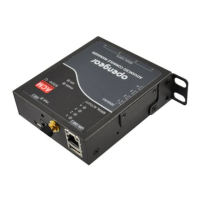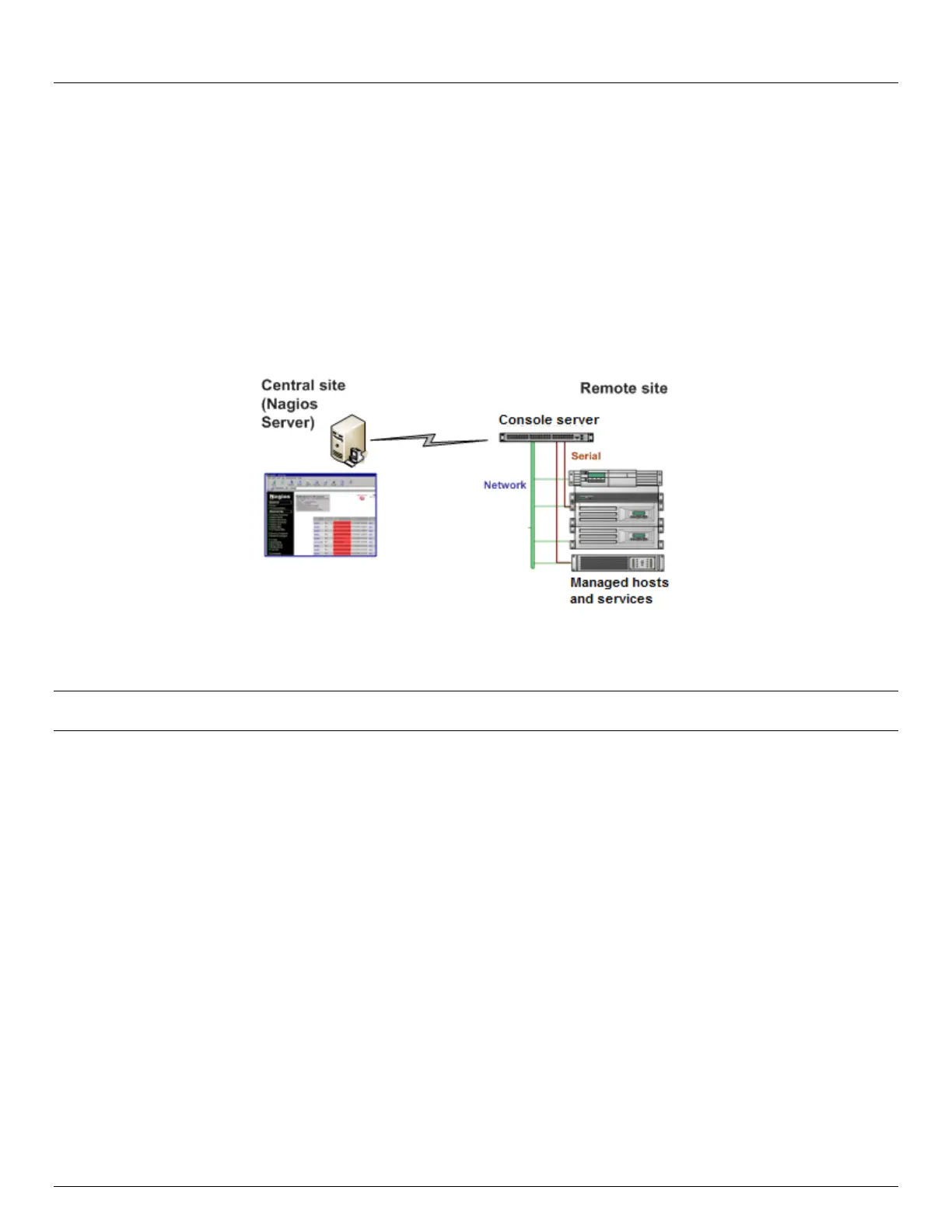Chapter 10: Nagios Integration
206 Console Server & RIM Gateway User Manual
NAGIOS INTEGRATION
Nagios is a powerful, highly extensible open source tool for monitoring network hosts and services. The core Nagios
software package will typically be installed on a server or virtual server, the central Nagios server.
Console servers operate in conjunction with a central/upstream Nagios server to provide distributing monitoring of
attached network hosts and serial devices. They embed the NSCA (Nagios Service Checks Acceptor) and NRPE (Nagios
Remote Plug-in Executor) add-ons – this allows them to communicate with the central Nagios server, eliminating the need
for a dedicated slave Nagios server at remote sites.
The console server products all support basic distributed monitoring. Additionally, IM4xxx families support extensive
customizable distributed monitoring.
Even if distributed monitoring is not required, the Console servers can be deployed locally alongside the Nagios
monitoring host server, to provide additional diagnostics and points of access to managed devices.
Opengear’s SDT for Nagios extends the capabilities of the central Nagios server beyond monitoring, enabling it to be
used for central management tasks. It incorporates the Opengear SDT Connector client, enabling point-and-click access
and control of distributed networks of Console servers and their attached network and serial hosts, from a central location.
Note If you have an existing Nagios deployment, you may wish to use the console server gateways in a distributed
monitoring server capacity only. If this case and you are already familiar with Nagios, skip ahead to section 10.3.
10.1 Nagios Overview
Nagios provides central monitoring of the hosts and services in your distributed network. Nagios is freely downloadable,
open source software. This section offers a quick background of Nagios and its capabilities. A complete overview, FAQ
and comprehensive documentation are available at: http://www.nagios.org
Nagios forms the core of many leading commercial system management solutions such as GroundWork:
http://www.groundworkopensource.com
Nagios does take some time to install and configure – solutions such as GroundWork and Opengear SDT Nagios are
aimed at simplifying this process. Once Nagios is up and running however, it provides an outstanding network monitoring
system.
With Nagios you can:
Display tables showing the status of each monitored server and network service in real time
Use a wide range of freely available plug-ins to make detailed checks of specific services – e.g. don't just check a
database is accepting network connections, check that it can actually validate requests and return real data
Display warnings and send warning e-mails, pager or SMS alerts when a service failure or degradation is detected
Assign contact groups who are responsible for specific services in specific time frames

